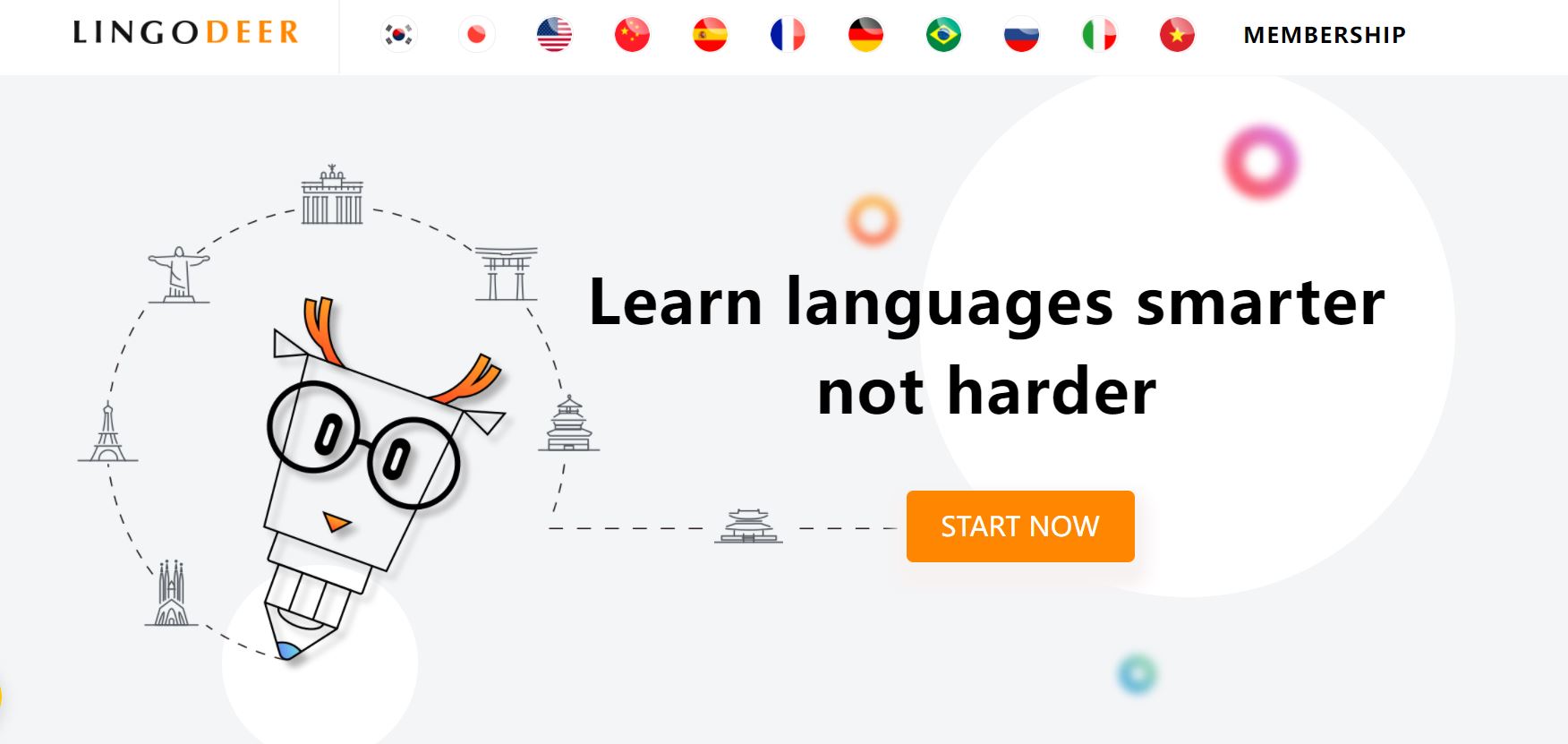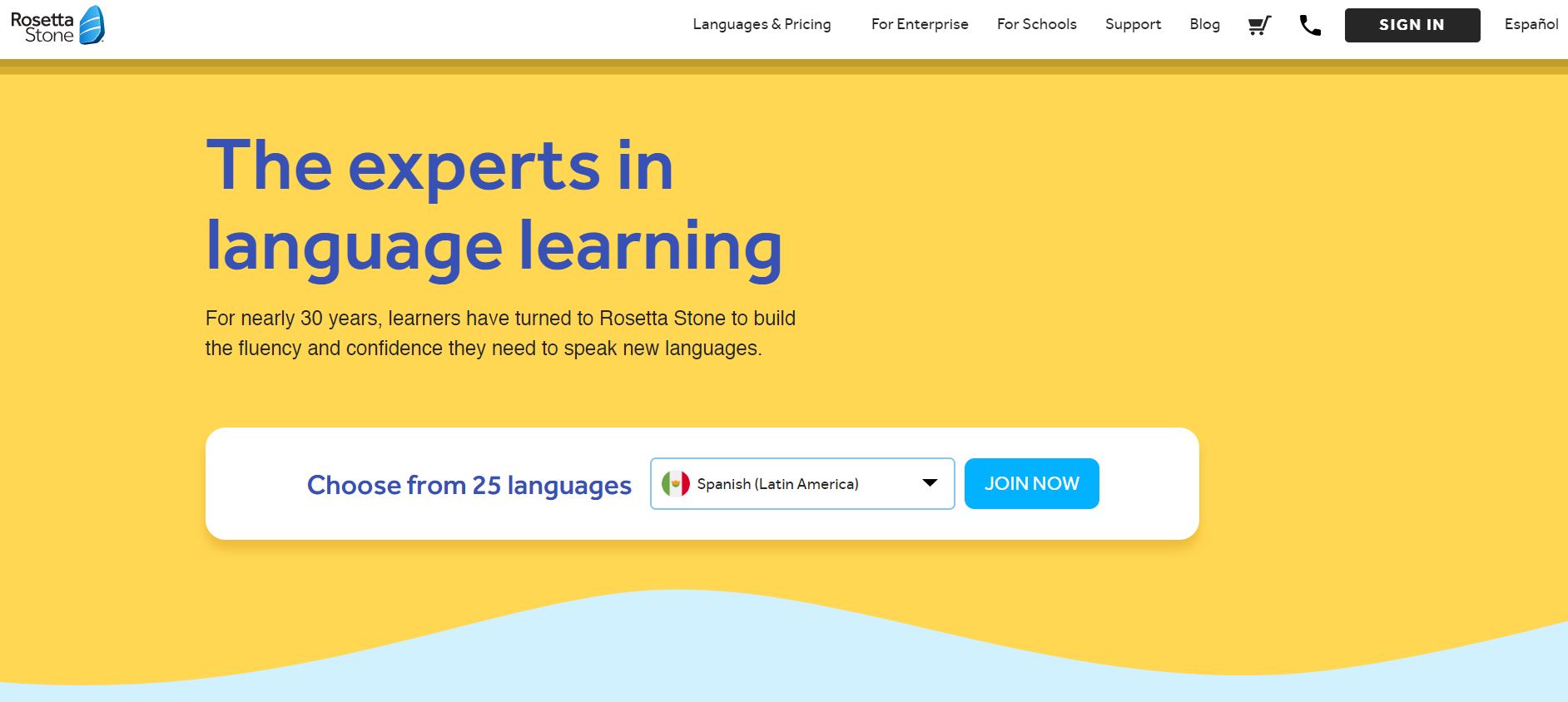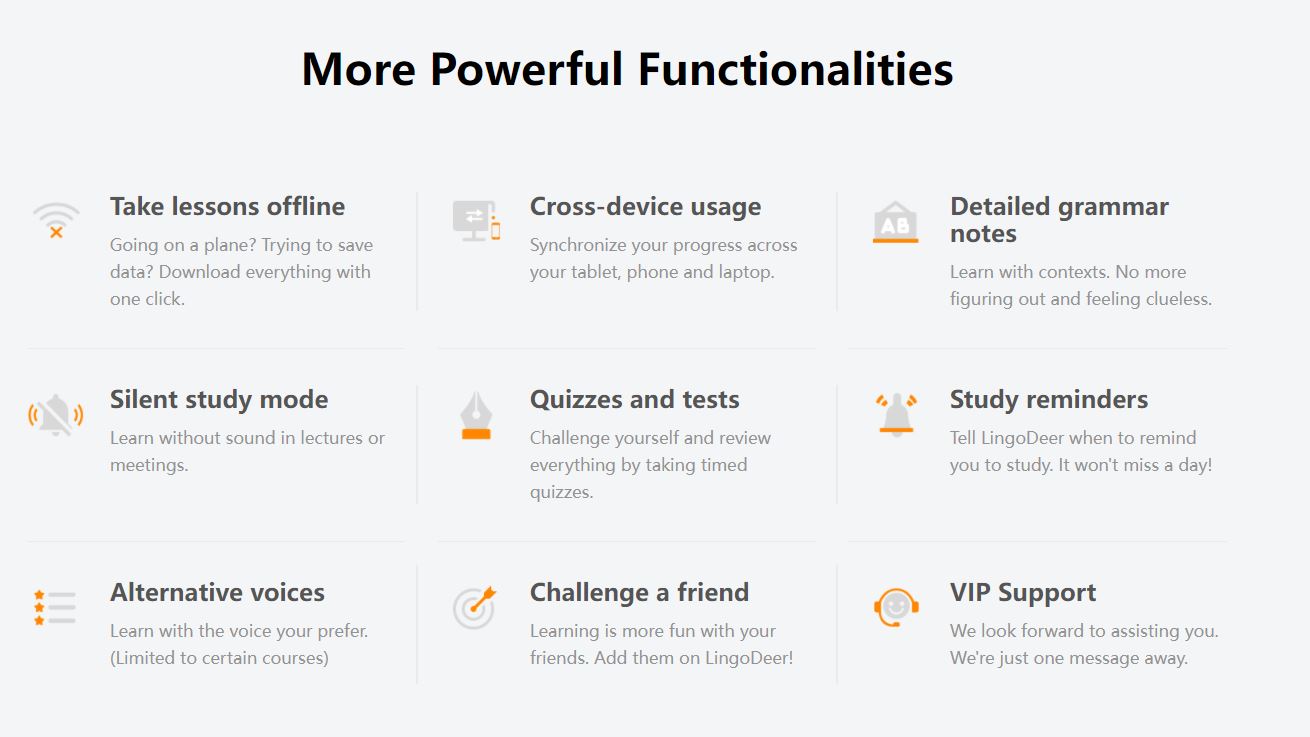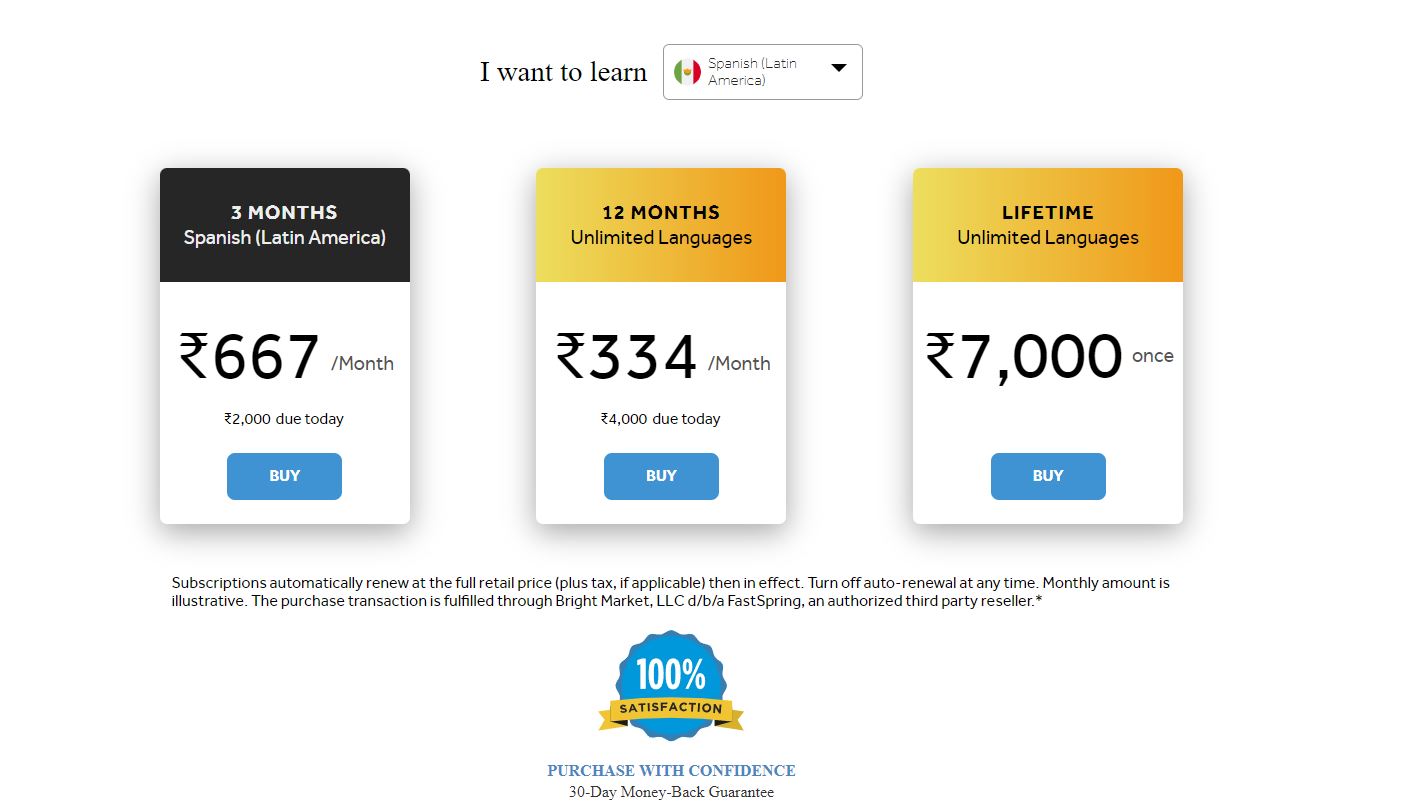Best For | Best for structured grammar learning, Asian languages, and offline study with exercises. | Best for learning a language through immersion, helping you think and speak naturally. |
Pricing | $14.99/month | $10.95 |
Features | Strong grammar focus |
|
Pros | Great for beginners, with grammar explanations | The full immersion method improves intuition |
Cons |
| Expensive subscription model |
Since you are here, you may already know how difficult it is to choose between these two competitors LingoDeer and Rosetta Stone.
Both of these platforms have really nice features and competitive pricing plans that make it harder for the users to decide between the two.
After a lot of research, I have written this article, which will help you decide between these 2 competitors. So, stay with me to the end.
LingoDeer Vs Rosetta Stone In 2025
What is LingoDeer?

LingoDeer is an educational software that enables users of all ages to learn nine different languages. Numerous levels of study are available for several languages.
Russian, Vietnamese, Portuguese, Chinese, French, Spanish, Korean, Japanese, and German are available. After selecting a language to study, you may choose a talent from a menu.
The “Day Streak” indicator displays the total amount of time and consecutive days you’ve used the program.
The Alphabet part serves as an introduction to pronunciation, with users tapping and exploring each letter to hear it said, as well as a location to hear the alphabet sounds uttered by a native speaker.
Additionally, this section contains information on the vowels, pronunciations, and syllables used in each language.
Users go sequentially through fundamental courses and connect with languages via more specific lessons structured by categories such as color, number, cuisine, employment, health, education, music, and sports.
Within each lesson, students will have repeated opportunities to learn and practice by selecting the correct vocabulary word from an illustration, hearing words and sentences, recording their voice speaking them with the proper inflection and pronunciation, and a lot more.
While many languages allow for the creation of sentences via the use of a keyboard or letters on the screen, visual languages such as Chinese contain extra chances for learning to write the relevant symbols in a step-by-step style.
The paid, premium edition of the program gives access to over 2,000 vocabulary terms and phrases in each language, as well as lesson suggestions, offline access, cross-platform use, a web version, and over 200 short lessons.
Additionally, you may alter the pace of the music, the text size, the backdrop colors, and the sound effects.
What is Rosetta Stone?

Rosetta Stone is without a doubt one of the most well-known language-learning applications available. However, is it beneficial?
Yes, emphatically, particularly if you’re new to a language and want to build a good vocabulary and grammatical foundation. It’s well-structured, straightforward, and proceeds at a leisurely pace.
After a few months of consistent use, you’ll be able to talk, read, write, and comprehend basic words and phrases. Rosetta Stone is the most comprehensive language study software available, and it is our Editors’ Choice for commercial products.
It’s critical to have reasonable expectations while learning a language at your own speed with the software. While Rosetta Stone will assist you with establishing a firm foundation, it will not enable you to become fluent.
When you feel as if you’ve reached the limit of your Rosetta Stone study, you may need to force yourself into settings where you’re actively speaking the language rather than responding to an app.
The most effective method of doing so is via chats with friends or private teachers. There is currently no program or software that excels in that area, however, Rosetta Stone does provide instruction for an additional price.
With the exception of American and British English, Rosetta Stone offers programs in the following languages: Vietnamese, Turkish, Tagalog (Filipino), Swedish, Spanish (Latin American and European), Russian, Portuguese (Brazilian), Polish, Persian (Farsi), Latin, Korean, Japanese, Italian, Irish, Hindi, Hebrew, Greek, German, French, Dutch, Chinese (mandarin), and Arabic. Not all languages are supported by every platform.
Rosetta Stone’s consumer-grade language learning products no longer include Urdu, Swahili, Pashto, Dari, and Indonesian.
Previously, while purchasing Rosetta Stone, you could only choose one language. Now, whether you purchase a one-year, two-year, or lifetime membership, you get all of the catalog’s languages. That is a far better bargain.
If the language you want is not included on that list, there are more applications available. Duolingo supports almost 30 languages.
Czech, Danish, Esperanto, Indonesian, Hawaiian, Hungarian, Navajo, Norwegian, Romanian, Scottish Gaelic, Swahili, Ukrainian, and Welsch are just a few of the languages available via Duolingo that are not covered by Rosetta Stone.
If you’re still unable to locate the language you’re looking for, consider Simon & Schuster Pimsleur Premium (a.k.a. Pimsleur), which includes 50 languages.
While Pimsleur is one of my favorite programs in terms of substance, the downside is that it is nearly exclusively audio-based. Give it a try if you’re not opposed to learning via listening.
Major Features and Benefits of LingoDeer

1. Each language course is distinctive in its own way:
After selecting your favorite language during enrollment, you’ll be sent to the lessons page, where you’ll find over 30 lesson selections, including Basics, The Alphabet, Food and Drink, Numbers, Greetings, Objects, Colors, and Verbs.
After completing each instructional portion, you may go to the next.
What I found particularly interesting was that Lingodeer seems to personalize each language with meals, locations, and things specific to that country and nationality, rather than using generic culinary items.
This is not true of all applications, which are sometimes much too cookie-cutter.
2. Knowledge cards that may be downloaded and an offline mode:
In today’s world, I suppose it’s convenient to have everything stored on our gadgets in the cloud. However, some of us prefer more concrete learning aids, which Lingodeer’s printed knowledge cards provide.
The knowledge cards enable you to brush up on and review your grasp of basic grammatical ideas.
They may be affixed on your refrigerator or kept on your desk. They’re an excellent solution for folks who dislike being constantly hooked into their gadgets and like to study in a variety of ways.
Additionally, it’s worth noting that Lingodeer has an “offline mode” that allows you to access their information even when you’re not connected to the Internet.
3. Guidance on education:
Lingodeer’s learning tips section has taught me a great deal. Throughout each session, you may swipe left to get ‘learning hints’ to assist you with the language you’ve chosen to study.
As said before, I’m studying Italian and got the chance to learn about the history of the language in this segment, as well as about pronouns and the present tense.
This is a very useful area that will benefit all language learners on Lingodeer.
Regrettably, other language programs sometimes fail spectacularly when it comes to teaching grammar, which I find unfortunate since grammar is basically the foundation of language and should not be disregarded.
4. All classes include crystal-clear audio quality:
Lingodeer’s high-definition audio for each language is exceptional. Crisp, straightforward phrases spoken by native speakers are simple to comprehend and imitate.
5. Diverse instructional styles:
As indicated before, Lingodeer’s courses are reminiscent of those found on Duolingo, Rosetta Stone, and Busuu.
Comprehending and filling in the gaps, sounds, and pronunciation, matching words to images and meanings, and eliminating the erroneous word are all included in the lessons.
6. Numerous languages to pick from:
When Lingodeer premiered officially, it supported just three East Asian languages: Korean, Japanese, and Chinese.
Since its inception, Lingodeer has expanded its language offerings to include Italian, Spanish, French, German, Russian, Portuguese, Vietnamese, Arabic, and English.
The app’s free edition enables you to try out a variety of starter classes and activities in several languages, which may help you choose which languages you are most enthusiastic about.
7. Attractive design and style:
I suppose some individuals may believe Lingodeer has an infantile design that is ‘condescending’ to grownups (Donovan has made this comment before regarding Duolingo).
However, I like the design and felt that the sparseness focused my attention on the lessons at hand, rather than on the gimmicky and confusing aesthetics that are the hallmark of many new applications these days.
When you fail a task, you get a red notice featuring the sobbing Lingo Deer. When you successfully finish a job, you get a green message with a happy Lingo Deer. It’s a positive, high-vibe design that begs to be used.
Major Features and Benefits of Rosetta Stone
1. Live Rosetta Stone:
Live teaching is a recent function given by Rosetta Stone. You may practice with qualified language coaches via Rosetta Stone’s live tuition and group coaching sessions.
Each week, there are free classes covering conversation, grammar, and pronunciation. Additionally, you may enroll in group or individual sessions with a Rosetta Stone online teacher.
All Rosetta Stone live lessons adhere to a curriculum designed by the organization, and all teachers are highly qualified experts.
I tried a number of the live courses in various languages and found them to be very enjoyable. The lesson plans were simple to follow, and the teachers were all quite engaging and enjoyable!
However, similar to the app, the themes are rather straightforward.
2. Stories:
The Stories section of the program is arguably the most helpful. It contains short tales written in your target language that you may read, listen to, or record yourself reading.
I like utilizing this tool since reading aloud and to yourself is one of the most effective methods to improve your fluency. The tales begin simply and get more complicated as you go through the course.
One part of Stories that I disliked was their usage of the Latin alphabet for non-Latin writing systems (like Mandarin Chinese and Japanese).
Rosetta Stone’s course also does not teach you how to write or read these languages, which was a bit of a letdown. However, using an app like Drops or Skritter in conjunction with Rosetta Stone may assist you with this.
3. Phrasebook:
The Phrasebook is another easy aspect of Rosetta Stone. It displays frequently used words and phrases and allows you to listen to how they are spoken by a native speaker.
It’s beneficial for reviewing vocabulary and honing your pronunciation, although it’s very restricted in scope. I believe that the other elements are much more beneficial for learning and practicing language.
MosaLingua is a much superior program for swiftly picking up new words and phrases.
4. Seek & Speak:
Outside of the main course, the Seek & Speak tasks provide an extra opportunity to practice your target language. You choose a subject, such as packing a suitcase or heading to the grocery shop, using Seek & Speak.
Then, you use your phone’s camera to photograph objects around your home. Rosetta Stone generates a discussion around these images, and you practice discussing the things.
This is a more participatory method of practicing, and it may assist you in more efficiently remembering words.
5. Translations Embedded:
However, for many language learners, the whole immersion component of the Rosetta Stone courses may be scary (and even irritating).
While some individuals adore it, others despise it utterly. And Rosetta Stone is aware of this. To make teachings more accessible to all students, the courses now include integrated translations.
They are not immediately available since Rosetta Stone encourages you to attempt to decipher the words and sentences on your own.
However, if you are really stumped, you may tap and hold the picture to see its translation. This is included in the most recent versions of Rosetta Stone, and I believe it is a significant improvement.
6. Courses:
The Rosetta Stone language lessons comprise the majority of the app’s content. While some languages contain more units and lessons than others, they always cover the same fundamental concepts.
The modules cover everything from the fundamentals of the language to more conversational themes like shopping and family.
However, Rosetta Stone lessons are unlike those offered by the majority of other language applications. They immediately immerse you in the language.
You listen to the words and phrases and then compare them to a picture to determine their meaning, similar to how toddlers learn a language.
This method encourages you to think critically about what you’re learning rather than simply memorizing words and translations.
Features Comparison – LingoDeer Wins
As you can clearly see, the features of LingoDeer are better than those of Rosetta Stone. Hence, we can say that LingoDeer is the winner for features. Also, the user reviews of LingoDeer are better than those of Rosetta Stone.
Pricing Comparison

LingoDeer will cost you as low as $ 14.99 per month, or you can choose the quarterly plan that will cost you $ 39.99 per quarter or the yearly plan which is $ 79.99 a year. They also have a one-time purchase lifetime plan which is $ 159.99.

On the other hand, Rosetta Stone has a 3-month plan that will cost you $ 11.99 per month, a 12-month plan that will cost you $ 9.99 per month, and a life plan that will cost you $ 179.
As you can see the pricing is pretty competitive and while the regular plans of LingoDeer are a little costlier, the lifetime plan or LingoDeer charges a little low. We can say both are winners here.
Quick Links
Final Verdict – LingoDeer Vs Rosetta Stone 2025– LingoDeer Wins
As you can see, both these platforms have performed well but clearly, LingoDeer is better.
The features of LingoDeer are unmatchable and pricing plans are pretty competitive too. I would strongly recommend choosing LingoDeer over Rosetta Stone.


